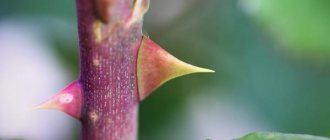- Sun-dependent and sensitive sorrel - description of the Oxalis plant
- Oxalis flowering
- Types of oxalis for indoor culture
- Conditions for growing indoor oxalis
- Lighting and interior placement
- Temperature and ventilation
- Caring for oxalis at home
- Watering and air humidity
- Feeding sorrel and fertilizer composition
- Pruning and shaping Oxalis
- Transplantation and substrate
- Diseases, pests and problems in growing
- Reproduction of Oxalis
- Video: oxalis, transplantation and care rules
One of the easiest to grow, but the most interesting indoor plants is wood sorrel, or Oxalis . Despite all its apparent modesty, this plant reacts so vividly to changing conditions and even to the time of day that you want to watch it endlessly. Blooming in the blink of an eye, with folding leaves, quivering and lively, reminiscent of a flock of fluttering shy butterflies, oxalis is now back on the list of the most fashionable plants. And it’s worth taking a closer look: new varieties with unique colors and rare species offer a choice for any interior. And the bright appearance of the bushes is more reminiscent of variegated garden annuals than of ordinary indoor plants.
Oxalis: photos, videos, types of oxalis, description, beneficial properties (read more)
Oxalis or Oxalis are sensitive “butterflies” on the windowsill.
Sun-dependent and sensitive sorrel - description of the Oxalis plant
Oxalis are plants that can be found on all inhabited continents. They are equally good in temperate, subtropical, and tropical climates. Indoor oxalis are plants whose selection originates from tropical exotics. Species of European origin have a significant drawback - shedding leaves for the winter, but they can also find their loyal fans.
Oxalis belong to the oxalis (Oxalidaceae). Some species are open ground plants, others are purely greenhouse and indoor species.
The name of the plant was given for the taste of the leaves, in which the sourness of oxalic acid is clearly felt (from the Latin “sour” - “oxys”). Our popular name, wood sorrel, is much more popular than its botanical name. The plants are often called butterflies for their fluttering, folding leaves.
Oxalis are herbaceous perennials and annuals that grow in dense bushes, actually in colony groups of dozens of individual plants. Most oxalis form stemless, not very large, but dense bushes of small bulbs with underground shoots and rosettes of beautiful long-petioled leaves, collected in 4-20 pieces.
But among them there are also plants with ordinary rhizomes and with tuberous thickenings, and the shoots can be shortened and creeping, and sometimes large, straight aboveground. The bulbs are very small, dark brown, elongated, the peripheral roots are not impressive in density and volume.
Oxalis leaves are difficult to confuse with other indoor plants. They are photosensitive, fold like an umbrella at nightfall, upon rough contact or in bad weather, and straighten out again on a sunny day. They are pinnately compound, consisting of three or more obverse triangular or obcordate segments folding into an almost flat plate.
The shape of the leaves of oxalis is often compared to clovers. The color range of oxalis leaves is very diverse. Dark green, bright purple-lilac, two-color variations and unusual chocolate tones of varietal oxalis are invariably combined with a lighter, as if covered with bluish-gray wire on the reverse side. The texture of oxalis leaves is surprisingly pleasant; they seem soft and velvety thanks to their special edge.
Rose sorrel (Oxalis rosea).
Perennial garden sorrel - what kind of flower is it?
Oxalis belongs to the Oxalis family and has about 800 species. There are annual and perennial varieties. Among this variety, garden sorrel is considered especially popular. It has medicinal properties and also has an attractive appearance.
One of the varieties of oxalis
Brief description of what it looks like
Perennial street oxalis has a very unremarkable appearance. Usually grows in tubers. The buds are small and have 5 round petals. Flowers can have different colors, but usually they are pastel warm colors. Dark red veins are clearly visible on the petals.
Additional Information! In bad weather and at night, the buds, like the leaves, may close.
The perennial also has the same appearance. The leaves of the flower are three-fingered, but there is also a four-leaf variant of the structure. The color of the plates can be dark green or light green. There are varieties in which the leaf blade has a rich burgundy color or two-tone color.
Appearance of the plant
Oxalis flowering
The flowering of oxalis is no less reverent and touching than its foliage. Small flowers seem not too simple, but radiantly elegant. With a diameter of only up to 2 cm, on very long and thin stalks, they are fancifully scattered in a spreading umbrella of inflorescences and allow you to admire both the yellow throat and the beautiful shape of the five petals of the corolla. Flowers react to bad weather, to the onset of night, and to mechanical irritation, slowly closing.
The Oxalis flowering palette includes white, yellow, pink, and lilac varieties, although many modern varieties also have unusual shades. All shades are pure, “acrylic”, they look elegant and amazingly festive. Flowering oxalis are always much lighter than the leaves, which creates a glowing effect. After flowering, medium-sized fruits that shoot small seeds ripen.
Oxalis ortgiesii.
Some oxalis are able to bloom almost all year round, with the exception of winter. 25-40 days after transplantation, the first flowers appear, and then, for 8-9 months, loose inflorescences rise above the quivering leaves on flexible long stalks.
Types of oxalis for indoor culture
Not many representatives of the genus Oxalis are used to decorate rooms, although more than 800 varieties of wood oxalis can be found in nature. The most popular species that tempt breeders to constantly replenish the collection of varieties used in hybridization are Deppe and Ortgis oxalis. But other types of wood sorrel, in particular, original plants that combine indoor and garden careers, also deserve attention.
Ortgies Oxalis (Oxalis ortgiesii) is a purely indoor species with pubescent shoots crowned with a rosette or whorl of leaves. Trifoliate, with obverse heart-shaped lobes and a notch at the apex, brown-reddish leaves create an openwork bush. And the yellow flowers in the umbels of inflorescences seem more graceful than those of other wood sours.
Oxalis triangularis.
Deppe's soursail, or Deppei's (Oxalis deppei).
Oxalis Deppei, or Deppei (Oxalis deppei) is a species of wood sorrel of southern European origin. It is primarily an ornamental deciduous tuberous perennial plant. A height of up to 35 cm does not prevent the plant from maintaining compactness and density. The bulbs produce creeping ground shoots, from which grow numerous, delicate leaves on thin long petioles with obverse-heart-shaped, notched lobes, on the dark surface of which purple stains appear unevenly, most often closer to the center.
Numerous pinkish-lilac flowers in rare umbels of inflorescences look very elegant and further emphasize the decorative nature of the leaves. This wood sorrel can bloom from April to November. The only drawback of this plant is that it drops its leaves during the dormant period.
Today, another type of oxalis is becoming increasingly popular - Beauvais sorrel, or Bouvie (Oxalis bowiei). It is also grown in open ground, although the plant works well as a long-flowering decoration for rooms and balconies. This is a herbaceous perennial up to 30 cm high, forming very dense bushes. Tuberous bulbs up to 2 cm in diameter are capable of producing about two dozen leaves.
Oxalis bowiei (Oxalis bowiei).
In this species of sorrel, they are trifoliate, with reverse teardrop-shaped lobes, light green, and sit on very long petioles. Peduncles are several times larger than the leaves, crowned with loose umbrellas of inflorescences made of white or pink funnel-shaped flowers. This species is loved for its splendor, large size, elegance and ability to bloom almost all year round - up to 9 months.
Purple wood sorrel (Oxalis purpurea) is one of the most recognizable types of wood sorrel. The plant is distinguished not only by the rounded lobes of trifoliate leaves, but also by its rich purple-red color. Reaching 7 cm in diameter, the leaves of this sorrel are collected in rosettes of 6-8 pieces and in a group create a beautiful air cushion. White or pink flowers highlight the beauty of the plant.
Another colored wood sorrel, Oxalis triangularis , has become famous for its dark, inky purple leaves with a brighter spot in the center. White, light purple or pink flowers appear almost porcelain against the backdrop of a loose bush of long-petioled leaves.
Ferruginous sour (Oxalis adenophylla) is a very beautiful garden species, which in rooms forms cushions up to 10 cm high from gray-green leaves collected in rosettes with ideal reverse-heart-shaped lobes. Its flowers are inimitable, with a transition from the lilac and pink edges of the petals to a white center, with touching veins and patterns.
Oxalis adenophylla.
Spiral wood sorrel (Oxalis spiralis, formerly known as volcanic wood sorrel (Oxalis vulcanicola) is a herbaceous perennial that forms a thick cushion of green, squat shoots and numerous trifoliate leaves with heart-shaped oval lobes. Famous for its dark green-brown color, the plant constantly grows in width , creating an openwork pillow.The flowers are yellow, small, and against the background of dark leaves they seem to shine, creating a spectacular contrast.
The ampelous species of wood sorrel, beloved by many, which has earned the nickname of lucky clover - pink sorrel (Oxalis rosea) - captivates not only with its flexible, long petioles and bright green color, but also with the similarity of its trifoliate leaves to clover. Delicate greenery, creating charming cascades in hanging baskets, contrasts with bright pink, four-petaled flowers.
Giant sorrel (Oxalis gigantea) is a larger plant with powerful, woody above-ground shoots that can grow up to 2 m. Three-lobed leaves in whorls appear miniature against the background of straight branches. The yellow flowers are quite large and look very elegant.
Nine-leaved wood sorrel is just beginning its indoor culture - a very beautiful wood sorrel, creating dense cushions up to 10 cm high from silvery-grayish rosettes, long-petioled, with long blades of palmate leaves. The flowers seem huge against the background of greenery, can be painted in both white and pink shades, they are somewhat reminiscent of petunias and hollyhocks.
One of the most popular species today is wood sorrel (Oxalis versicolor). It is famous not only for its narrow lanceolate leaf lobes, which make the bright greenery look like rosemary, but also for its variegated, striped buds. After blooming, the flowers surprise with their double color - red on the outside of the corolla and white on the inside.
Oxalis bowiei (Oxalis bowiei).
Other types of wood sorrel - both subshrubs and herbaceous ones - are increasingly appearing on sale, because this plant has something to brag about over its competitors. Almost every species has a “set” of varieties with different colors of leaves and flowers, which allows you to search for wood sorrel according to its decorative characteristics and color scheme. But most modern wood sorrel are hybrids, which do not even indicate the origin or species from which they were obtained. These are bright varieties with golden, variegated, carved leaves and a wide variety of flower colors, which are chosen purely according to your taste.
Conditions for growing indoor oxalis
Not just light-loving, but light-dependent, sorrel is one of the most predictable indoor plants. Despite the fact that most species love cool winters, growing them in ordinary living rooms is not at all that difficult. The plant reveals its beauty most fully in not very hot temperatures, but it looks just as elegant as garden summer flowers even in conditions that are far from optimal.
Lighting and interior placement
The sun dependence of wood sorrel directly indicates the lighting it will need. This is an extremely sun-loving plant that does not like shading and cannot be grown away from window sills. The midday sun leaves burns on the tender leaves of the plant, and the sloppy appearance, accelerated flowering and shedding of buds and leaves are not the best reward for its southern location. But the morning and evening sun will not harm the wood sorrel.
The best place for Oxalis is considered to be eastern windows. Even in the west, diffused light is preferable, but placing it not on a window sill, but not far from a west or south window is also suitable. When moving the plant away from the windowsills, it is worth monitoring its reaction: if there is not enough light, the sorrel will very quickly signal this with its folded leaves in the middle of the day.
Giant wood sorrel (Oxalis gigantea).
Temperature and ventilation
Despite its tropical origin, oxalis is not a heat-tolerant plant. At high air temperatures, its development accelerates, the plant quickly loses its decorative effect and becomes more sensitive to watering and maintenance conditions. The optimal temperature for oxalis is considered to be ordinary room temperatures in summer (up to 25 degrees).
The wintering conditions for wood sorrel are directly determined by the type of plant. For wood oxalis that do not shed leaves, especially varieties of wood sorrel Ortgis, it is advisable to lower the indicators by at least a few degrees - to +16...+18 degrees Celsius. A warmer winter will require increased air humidity.
But Deppe's wood sorrel, which sheds its leaves, must overwinter in a cool place. After losing the leaf mass, it is transferred to a shady and cool place with a temperature of about +10...+12 degrees (the minimum permissible value is +8 degrees). It is enough to limit the cold exposure period to 6 weeks. Other species of wood sorrel can overwinter in any temperature range from +12 to +18 degrees.
The dormant period for oxalis does not have to occur in winter: by shifting the timing, you can achieve flowering in winter. It all depends on whether you can keep the temperature down and when you want it to bloom (assuming 6-8 weeks of dormancy and about 30-40 days before flowering).
Plants are returned to warm conditions when the first signs of growth of shoots and leaves begin to appear, as well as after transplanting.
Oxalis is a sun-loving plant that cannot be grown away from window sills.
Common sorrel - what is it?
Oxalis grass (Oxalis in Latin) is a herbaceous perennial that belongs to the Oxalis family. This plant has several different names. It may be called cuckoo clover, hare's cabbage or hare's sorrel.
Blooming petals of wood sorrel
Many people are interested in where sorrel grows most often. This perennial has a fairly wide distribution and therefore can be found in almost any part of the Eurasian continent. The flower is often found in Belarus, Ukraine and Russia. The plant is also common in southern Africa and America.
The flower prefers shaded areas with humidified air. That is why the sorrel plant is often found in forests with deciduous and coniferous trees. It can also grow on the banks of rivers or ponds. Less common in hilly areas and mountains.
Important! When growing such a shade-loving plant at home, you also need to choose shaded places in the garden or in the apartment so that the sun's rays do not fall on the flower.
Caring for oxalis at home
It is not for nothing that Oxalis is considered one of the easiest crops to grow. It is suitable not only for beginning gardeners, but also for teaching children how to care for plants, because it is very interesting to observe its changing behavior and sensitive reaction to changes in the environment and care.
Oxalis easily forgives mistakes in care (not very serious violations and without consequences for decorativeness), but the plant also recovers well and quite quickly copes with the consequences of any problems.
Watering and air humidity
Despite the fact that wood sorrel is actually a bulbous plant, it requires abundant watering. Active growth and flowering require fairly frequent water treatments. The soil should not become waterlogged, but only the top layer of soil should dry out between waterings. Stable average humidity allows you to achieve the best growth rates and more abundant flowering. Water in the trays should not stagnate.
In winter, watering for Deppe's oxalis is completely stopped (provided it is kept in a cool place). But for Ortgis sour and other varieties, watering continues, but carefully. Between these procedures, the soil is dried to the middle, maintaining light constant moisture in the substrate and reducing watering by an average of two times compared to the summer frequency. It is better to make the transition from active to meager watering smooth, gradually reducing the frequency of these procedures.
Oxalis does not need to install humidifiers, but in high air humidity the colors appear brighter, the plant develops more intensively and luxuriantly. For this crop, you can limit yourself to simple spraying, carried out in spring and summer. The higher the temperature, the more often these procedures should be. The plant is not afraid of the leaves getting wet, but it is better to use small sprayers.
Feeding sorrel and fertilizer composition
Feeding for oxalis should not be resumed as soon as the plant begins to grow, giving several weeks to adapt and use soil resources. They begin feeding not in March, but in April, carrying them out with the usual frequency of once every 2-3 weeks. Feeding should be completed at the end of August.
For oxalis, universal fertilizers are more suitable. Using special fertilizers for flowering or decorative foliage plants will upset the balance of nutrients. For wood sorrel, do not follow the manufacturer's instructions on the dosage of the drug, reducing the concentration of fertilizers by half.
Spiral sorrel (Oxalis spiralis).
Pruning and shaping Oxalis
Oxalis do not require shaping, but hygienic cleaning for these plants should be carried out regularly. Drying leaves and flowers in the lush cushions of this plant are very noticeable. To make it easier to clean the bushes from plant debris, you should let the leaves dry completely - in this case they can be easily removed by hand.
Transplantation and substrate
Oxalis belongs to indoor plants that quickly grow colonies and require annual replanting. It is usually carried out at the end of February or March, but the timing can be changed depending on when you want to get more abundant flowering (it begins approximately a month after planting).
Transplantation is carried out, making sure to replace the substrate and trying to handle the corms as carefully as possible. When replanting, you need to thoroughly clean the plants of plant debris and dry leaves.
For Oxalis you need to choose the lightest substrates. A universal substrate with the addition of sand, a mixture for flowering plants, or a special soil mixture for bulbous plants are perfect. If you compose the soil yourself, then it is better to combine leaf, turf, humus and peat soil with sand in a ratio of 1:1:1:2:1. For Beauvais sour, you can use a simpler soil mixture consisting of equal parts of leaf soil, sand and peat, and for Depp's sour - a mixture of equal parts of sand, leaf and turf soil or an ion exchange substrate.
Oxalis cannot be grown one bulb at a time: the plant is grown in dense, large groups. Usually 8-10 bulbs are planted in one container. When planting, the nodules are buried in the soil 1 cm to the ground line. A layer of drainage must be laid at the bottom of the containers (expanded clay for wood sorrel is the preferred choice). After planting, it is advisable to keep the plants cool, limiting yourself to very careful watering.
Oxalis Deppe performs well when grown hydroponically. Herbaceous species of oxalis can be grown not only in ordinary pots, but also in ampels, hanging baskets, and used for vertical gardening and creating flowering walls.
Diseases, pests and problems in growing
Oxalis are very resistant to pests; they can only suffer if they are adjacent to infected neighbors from scale insects or aphids. It is better to control insects by using insecticides. Overmoistening and stagnation of water in containers leads to rot and fusarium. It is better to combat the problem not only by treating with fungicides, but also by emergency replanting, treating the bulbs in a solution of the drug and removing the damaged parts.
Problems in growing oxalis are most often associated with insufficient lighting. In shading, especially if there is not enough light all the time, the plant stretches out, becomes deformed, looks sloppy, the leaves lie down, turning from elegant bushes into a loose and unattractive mass.
Oxalis is very easily propagated by daughters.
Signs and superstitions
There are many signs and superstitions associated with most plants. This fate did not spare the wood sorrel either. But all the signs are extremely good. Thus, the presence of oxalis in the house promises peace, harmony, mutual understanding, protection from quarrels and misunderstandings, promises meetings only with good, kind people and protects against bad ones. It is also believed that this plant helps single people find love and helps create a full-fledged, happy family. Depression and bad mood go away when sorrel appears in the house.
Note! A pot of sorrel is a wonderful gift made from the heart; it will become a real talisman.
Oxalis in the house is a good omen
Garden oxalis is a unique plant that gardeners should pay attention to. Unpretentious, discreet at first glance, it will complement any landscape design. And for lovers of alpine slides, oxalis is a real lifesaver.
Reproduction of Oxalis
The plant, which grows quickly and generously produces new children, is propagated very simply - by daughter nodules. When separating nests during transplantation, they are simply grouped into 8-15 pieces and planted in separate containers, following generally accepted rules.
The plant can also be grown from seeds. Seedlings will begin to fully develop only from the second year, in the first year creating a single rosette of leaves and growing thicker underground shoots (but then the curtains will become overgrown very quickly in the future). Seeds are sown superficially, without covering with soil, in a substrate common for oxalis and moistened with a sprayer. The glass or film is removed as the seedlings grow. In the first year, the plants are carefully moistened; planting is postponed until the seedlings become crowded.
Oxalis that form above-ground shoots, including Ortgis oxalis, also reproduce by cuttings. The shoots are rooted in warmth, at a temperature of about 25 degrees, in clean sand with stable light humidity.
Care
Almost all types of wood sorrel are quite heat-loving, so very often shelter is provided for it in the winter. They can serve as mulch and ordinary spruce branches. Watering: Requires watering in hot weather. Feeding: mullein infusion or mineral fertilizers will be good care for this plant.
I have a common sorrel growing. I did not fertilize it and rarely watered it, since the plant was in partial shade. Oxalis, which has tubers, is dug up for the winter and stored in a warm room, after washing, separating the children and drying. And in the spring, when the soil is warm enough, they are planted at a distance of 10 cm from each other to a depth of about 4 cm.











